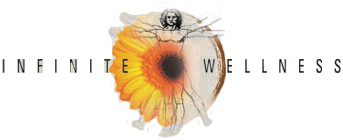Holistic Medicine
What is Alternative Medicine?
Alternative Medicine and complementary medicine are terms used quite frequently when referring to a group of therapeutic and diagnostic disciplines that exist outside the institutions where conventional healthcare is taught and provided (although in the last 5 years, many traditional medical centers offer such alternative therapies as acupuncture and massage in combination with traditional allopathic medicine). Alternative and complimentary medicine has been defined in many ways by many institutions. The definition of complementary medicine adopted by Cochrane Collaboration is that “complementary and alternative medicine (CAM) is a broad domain of healing resources that encompasses all health systems, modalities, and practices and their accompanying theories and beliefs, other than those intrinsic to the politically dominant health system of a particular society or culture in a given historical period. CAM includes all such practices and ideas self-defined by their users as preventing or treating illness or promoting health and well-being. Boundaries within CAM and between CAM domain and that of the dominant system are not always sharp or fixed.”

History of Alternative Medicine
From about 1970 through 1980 alternative medical and complementary care were mostly provided as an alternative medicine to conventional or traditional healthcare and therefore became known collectively as “alternative medicine.” The name “complementary medicine” developed as the alternative medical system and the Western allopathic medical systems began to be used alongside (to compliment) each other. Over the years, “complementary” has changed from describing the relation between unconventional healthcare disciplines and conventional care to defining the actual type of treatment system. Today, many conventional healthcare professionals work in a holistic manner and are implementing alternative medicine as part of their practices or are at least recommending that their patients look into it as a conjunctive or complimentary therapy. Some medical schools even have a complementary medicine component as part of their curriculum.
Common Misconceptions
There are often misconceptions about alternative medical care providers–that they are strict believers in only alternative medicine as an option for healthcare–on the contrary. Most users of complementary medicine have not abandoned conventional medicine as part of an individual’s care, especially with the diagnostic capabilities that are available today.
The Unique Differences Between Methods and Practitioners
Most complementary or alternative medicine practitioners have a multilevel view of human illness. Disease is thought to result from disturbances at a combination of physical, psychological, social and spiritual levels. The idea is that each individual is unique and the body has a unique ability for self-repair. With this in mind, there is nutritional supplementation that helps to support biological repair and also mental, emotional, and spiritual support and work. According to most complementary practitioners, the purpose of the therapeutic intervention is to restore balance and facilitate the body’s own healing responses rather than to target individual disease processes or stop troublesome symptoms, although these are commonly linked and wellness is measured by the change in these symptoms and disease processes. Therefore they usually prescribe lifestyle changes, dietary changes, exercise, and specific nutritional and treatment protocols. It should be stressed that this holistic approach should not be, and sometimes is not, unique to complementary or alternative medical practice. In our present allopathic healthcare systems, good conventional general practice should follow similar principles as well. Because these two systems often come from a very different idea of diagnosis and evaluation, there is often confusion from one practitioner to another when trying to use complimentary medicine in combination with Western allopathic medicine.
Alternative medical practitioners often have very different methods of assessing and diagnosing patients. A patient’s condition may be described as “deficient Spleen Qi” by a traditional acupuncturist, a pulsatilla constitution” by a homeopath, and “Irritable Bowel Syndrome (IBS)” by a conventional doctor. Understandably, there is much confusion between the different diagnostic systems from practitioner to practitioner: some patients with deficient Spleen Qi do not have IBS, some IBS patients do not have deficient Spleen Qi. This can cause confusion when a practitioner is trying to communicate diagnosis to another practitioner involved in treating the same patient and even to the patient themselves when trying to compare complementary and conventional treatment methods and diagnosis. Even though there are struggles in the communication and understanding between practitioners, the use of complimentary medicine and alternative medicine is growing rapidly in this country and in many others.
The Rapid Growth of Alternative Medicine
Based upon information in the Journal of the American Medical Association (Vol. 280, November 11, 1998), the use of complementary and alternative medicine (CAM) has grown rapidly among the public, with more than one-third of adults reporting that they have pursued some form of alternative medicine which includes products such as herbal remedies, techniques such as acupuncture, and schools of practice such as naturopathy. Research has shown that in 1997 Americans made 627 million visits to practitioners of alternative medicine and spent $27 billion of their own money to pay for alternative therapies (in contrast Americans made only 386 million visits to their Western medicine family doctor during that time). It is estimated, by the Harvard Medical School, that one out of every two persons in the United States between the ages of 35 and 49 years old used at least one alternative therapy in 1997. That is a growth of 47.3 percent since 1990. This is spectacular by any means and of great concern to conventional (allopathic) medicine especially since the people using alternative medicine are considered well-educated, affluent, and from the baby boomer generation. This rapidly growing trend is continually being repeated throughout many countries and throughout Western society as a whole. In Australia 57 percent of the population now use some form of alternative medicine, in Germany 46 percent, and in France 49 percent. The growth of some types of alternative medicine is indeed astounding. Between 1991 and 1997 the use of herbal medicines alone in the United States grew by 380 percent and the use of vitamin therapy by 130 percent. These numbers are astounding and are very valuable in determining what we know to be effective healthcare.
The Advantages of Alternative Medicine
The reason so many people increasingly prefer to use alternative medicine instead of conventional medicine is that it is safe and very effective. While Western (allopathic) medicine works in cases of critical care and trauma/emergency (you don’t call an acupuncturist if you cut your finger off), it is much less effective when it comes to prevention and treatment of chronic disease and to addressing the mental, emotional, and biological needs of any individual. These are the areas in which alternative medicine excels. To most of the worlds’ population (80%), alternative medicine is not alternative medicine but rather the basis of a true healthcare system. To Western-trained physicians alternative medicine is “something not taught in medical schools” and something that most Western medical physicians (which is progressively changing) don’t use and generally know absolutely nothing about. Even though alternative practitioners, and a small group of conventional physicians, do embrace the use of natural and alternative therapies and products, the vast majority of Western medical physicians are still resistive to the information, education, and usage of this medicine and even ridicule alternative medicine. That is why so many medical physicians will recommend that their patients not attempt to use alternative therapies—they are simply not educated in this field and therefore reject the idea of these therapies.
Catherine Zollman, Andrew Vickers. ABC of complementary medicine, BMJ 1999;319:693-696 (11, September)
Complementary and Alternative Medicine in the United States, Institute of Medicine, January 12, 2005
Hans R. Larsen, MSc ChE . Alternative Medicine: Why so popular?, International Health News Issue 93, Sept. 1999, pp.1-5
Eisenbert, David M., et al. Trends in alternative medicine use in the United States, 1990-1997. Journal of the American Medical Association, Vol. 280, November 11, 1998
Bensoussan, Alan. Complementary medicine—where lies its appeal? Medical Journal of Australia, Vol 170, March 15, 1999, pp. 247-48
